Dim Sum Style Beef Cheung Fun Beef Noodle
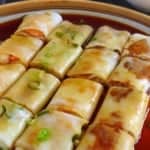

A complete guide to making Cheung Fun, a classic dim sum dish, from scratch. It includes a batter formula, filling options, steaming tips and a dipping sauce.
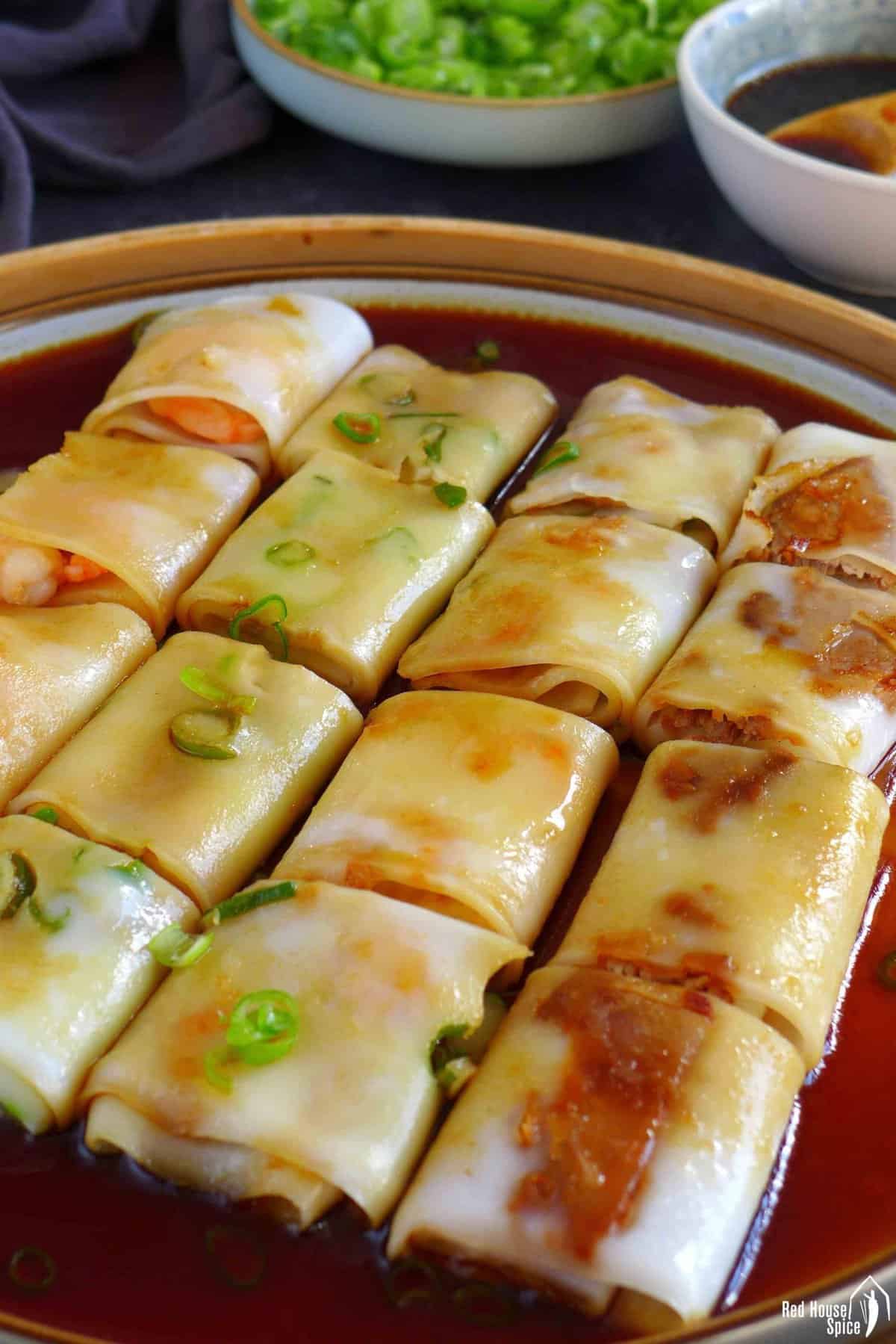
What is Cheung fun
If you're familiar with Cantonese dim sum meals (广式早茶), you probably have tasted Cheung Fun (肠粉), a classic dish also known as steamed rice noodle rolls (or rice rolls). Apart from dim sum restaurants, small street cafes in Canton and Hong Kong serve it, often with congee, as a quick yet delicious breakfast or snack.
Essentially, Cheung Fun refers to sheets of rice noodles presented as rolls stuffed with various fillings. Smooth, slippery, soft and a little chewy, they're typically served with a savoury sweet sauce.
Like many classic dim sum items, such as Har Gow, Char Siu Bao, Shumai, etc, Cheung Fun is a steamed dish. The equipment used and steaming method are very similar to how you cook Northern Chinese street food Liang Pi (Cold Skin Noodles), a beloved childhood food of mine.
One of the many great things about Cheung Fun is that it can be made to suit different dietary requirements: vegetarian, vegan, gluten-free, etc.
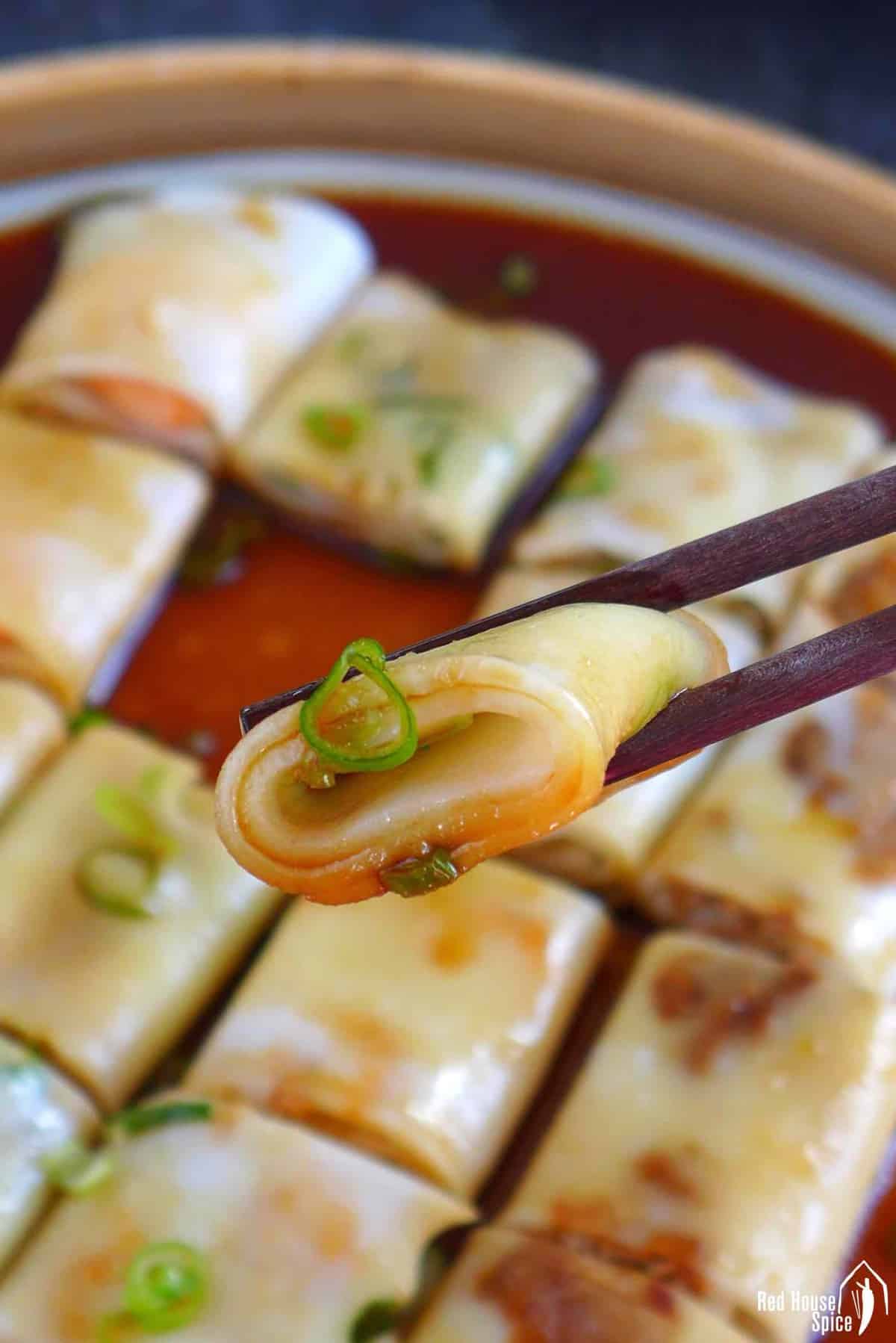
What to use for the batter
The first step when making Cheung fun is to mix the batter which consists of rice flour, starch and water.
A combination of rice flour and starch
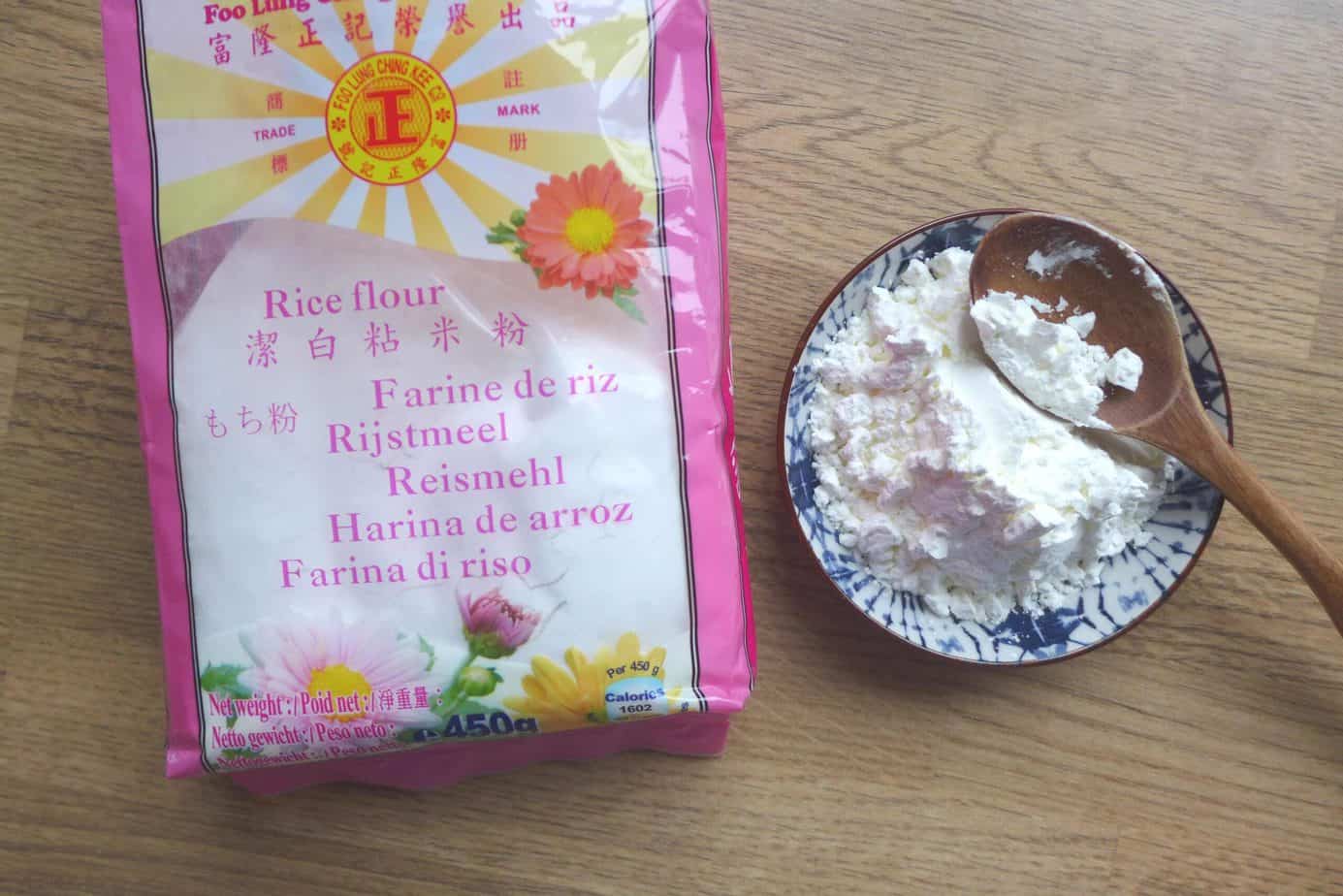
Rice flour (粘米粉), the key ingredient of Cheung Fun, is finely milled rice that looks like cornstarch. It contributes to many classic Chinese dishes, such as New Year Rice Cake, Turnip Cake, etc. Don't confuse it with glutinous rice flour (糯米粉) which has a sticky nature and can not be used as a substitute for this recipe.
To improve the texture of Cheung Fun, starch is often combined with rice flour to make the batter. It can be wheat starch (澄粉), cornstarch, tapioca starch, etc. I've experimented with all of them and found out that the result isn't dramatically different.
If available, I'd recommend wheat starch as it seems to produce a little more transparent and elastic texture. However, please feel free to use corn or tapioca starch if they're at hand.
NOTE: In some Chinese stores, you may find pre-mixed, special Cheung fun flour (肠粉专用粉).
The ideal ratio by weight
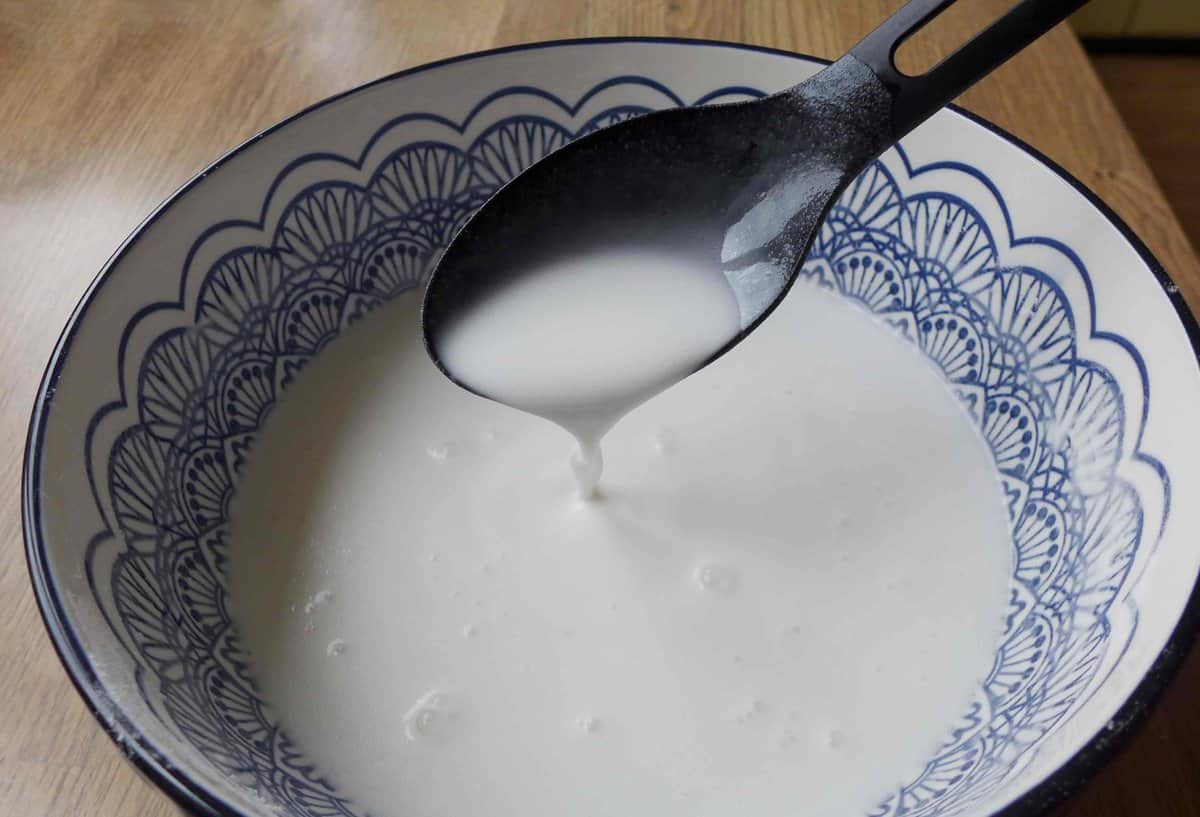
Through multiple testing, I've finally settled on a batter ratio that works very well in producing soft, smooth Cheung Fun with a little chewiness. The ratio is by WEIGHT. No matter how you measure, using grams or ounces, the proportion remains the same.
- 1 part starch
- 2 parts rice flour
- 7 parts water
For example, to make 6 rolls of Cheung Fun, whisk 50g starch, 100g rice flour, 350g water, along with a little salt and cooking oil, in a mixing bowl until a runny, lump-free batter forms.
After the batter is mixed, leave it to rest for a short time to allow the starch molecules to fully absorb the liquid. It also helps to remove any bubbles trapped in the batter. While waiting, move on to the next step to prepare some fillings.
Cheung Fun filling options
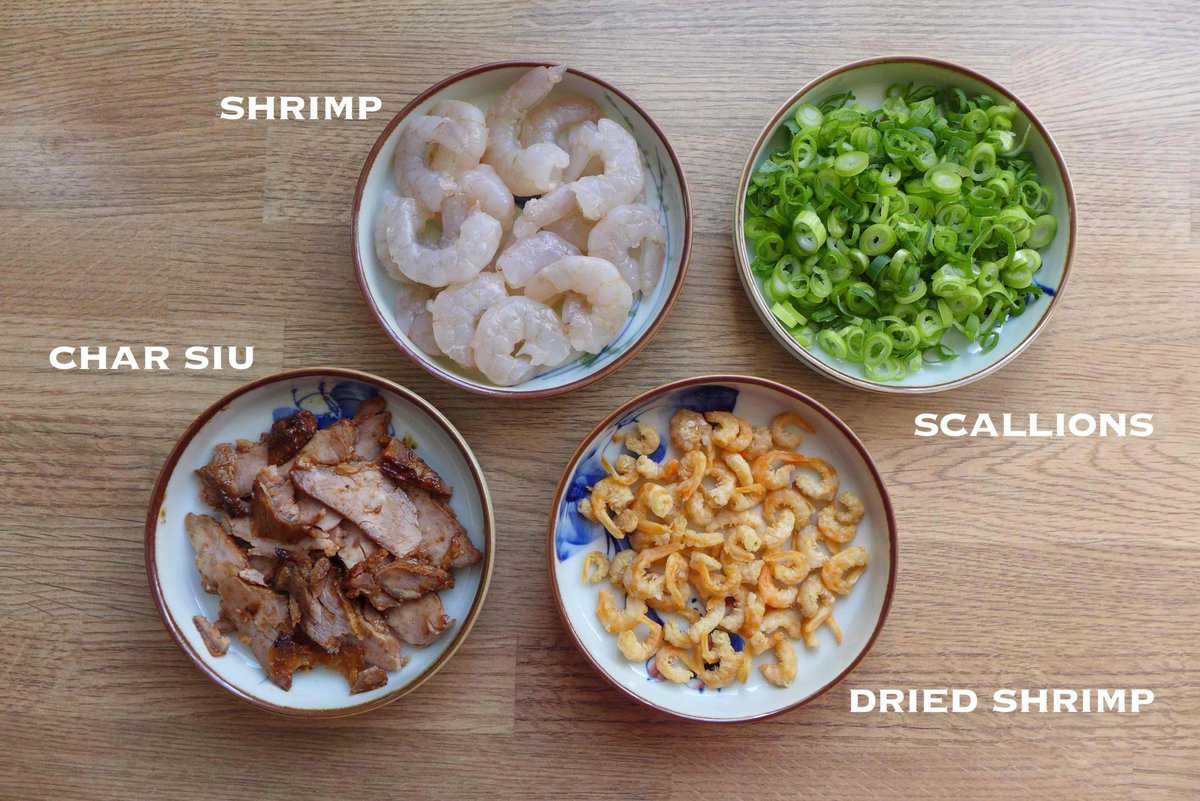
Dim sum restaurants usually offer a variety of Cheung Fun dishes with different fillings. For shooting this recipe, I've chosen four ingredients for demonstration: scallions, dried shrimp (rehydrated), Char Siu pork and shrimp. All of them can be directly added to the batter when steaming.
Other popular fillings include marinated pork or beef, eggs, Chinese fried doughnut sticks (You Tiao), etc.
How to steam
Once the batter is rested and the fillings are chopped, you're ready to steam them. The process is simple but let's first talk about the equipment needed.
Equipment
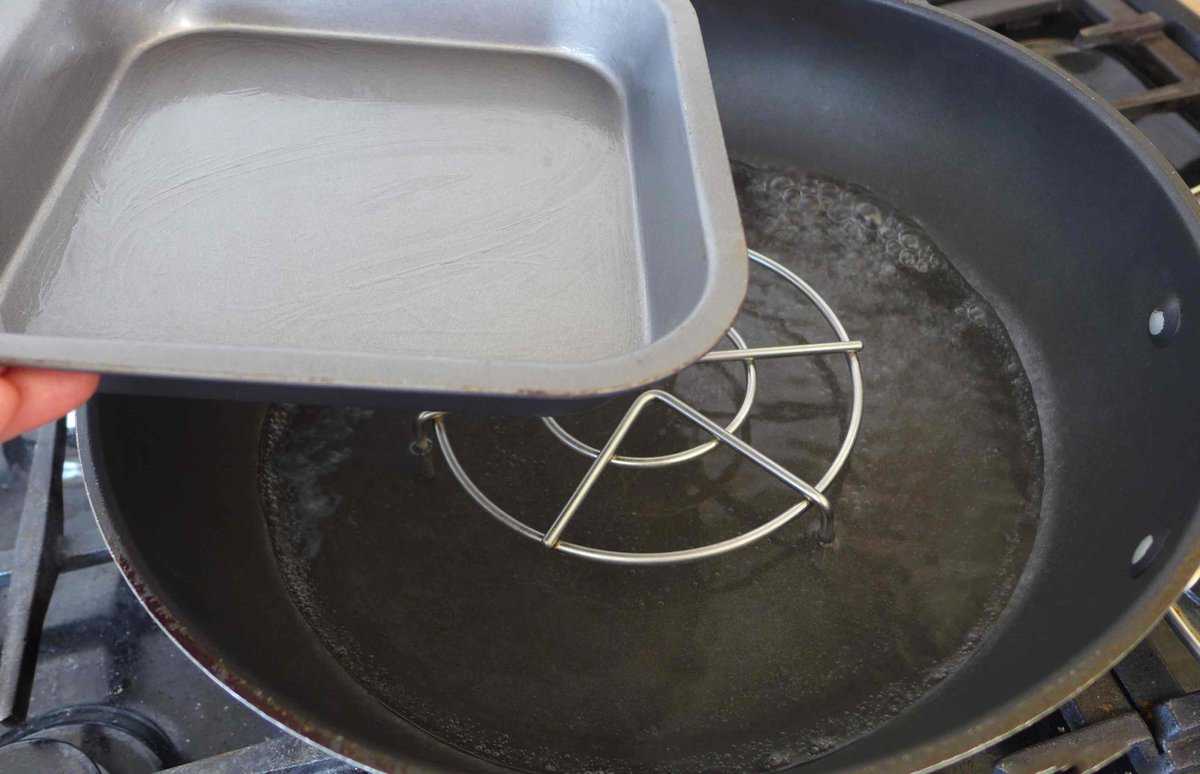
- Baking trays/sheet pans. Use two, if available, to speed up the steaming process. They should be small enough to fit into your steamer. Light-weighted ones transfer heat quickly thus prefered.
- A steamer. You can either use a steamer basket or a steamer rack to pop up the tray. I use the latter sitting in a large wok.
- A scraper or a spatula with a straight line edge. It's for peeling the steamed sheet off the tray and turning it into a roll.
NOTE: I've seen special Cheung fun makers available online. They look handy for those who wish to frequently make Cheung Fun at home.
Steaming tips
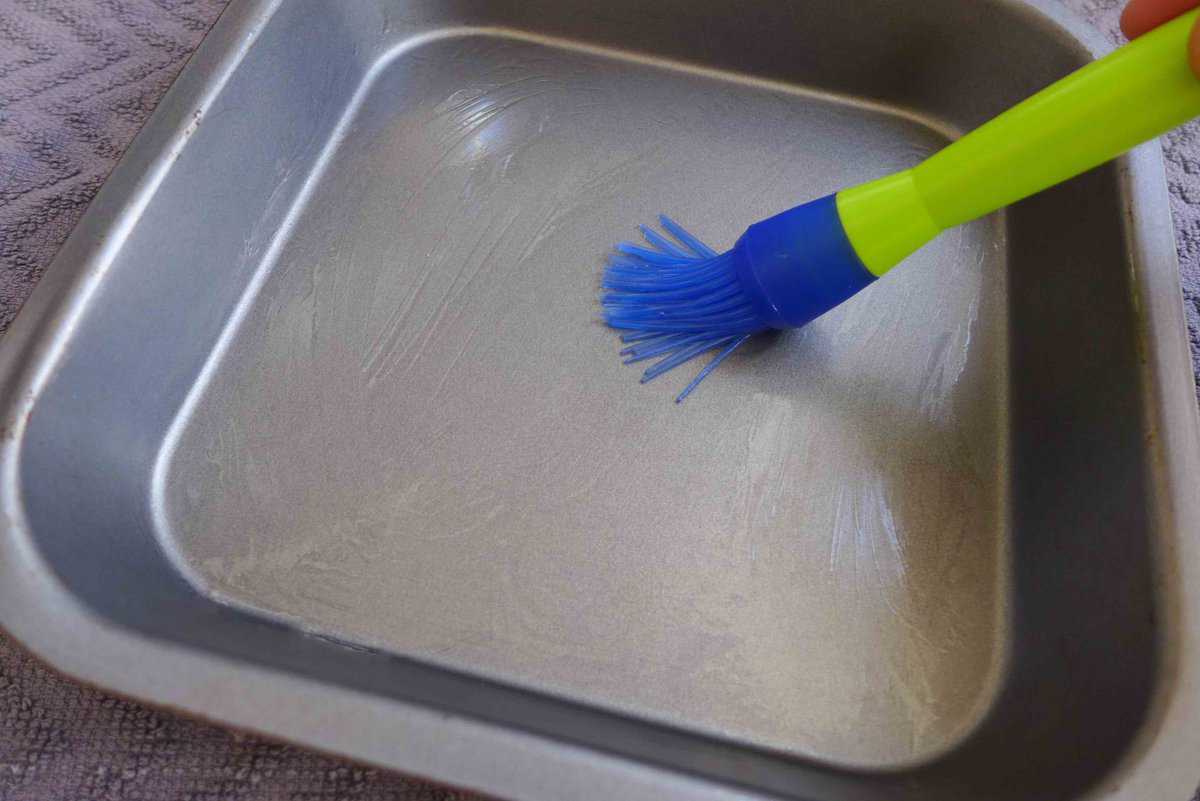
Remember to brush or spray the tray with a very thin layer of oil before you pour in the flour mixture (do so even if you're using non-stick ones).
Always stir the batter very well before pouring as starch tends to sink to the bottom. Add the batter just enough to cover the entire surface of the tray. If too much, the cooked rolls will be too thick.
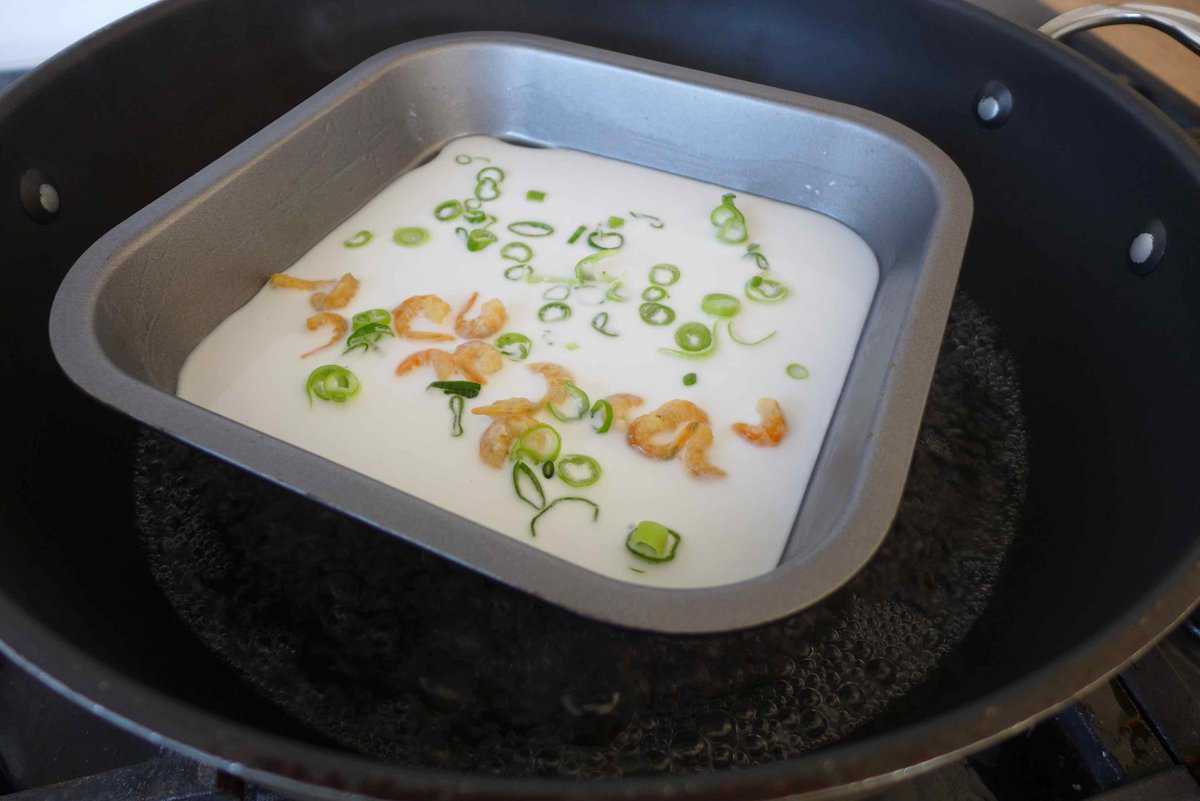
Put the fillings over the batter if using scallions, dried shrimp (rehydrated) or Char Siu. If adding raw ingredients, such as shrimp, I recommend you steam the batter for 1 minute (it has turned somehow solid), then add the fillings. Otherwise, the moisture coming from the raw ingredients would dilute the batter where they sit.
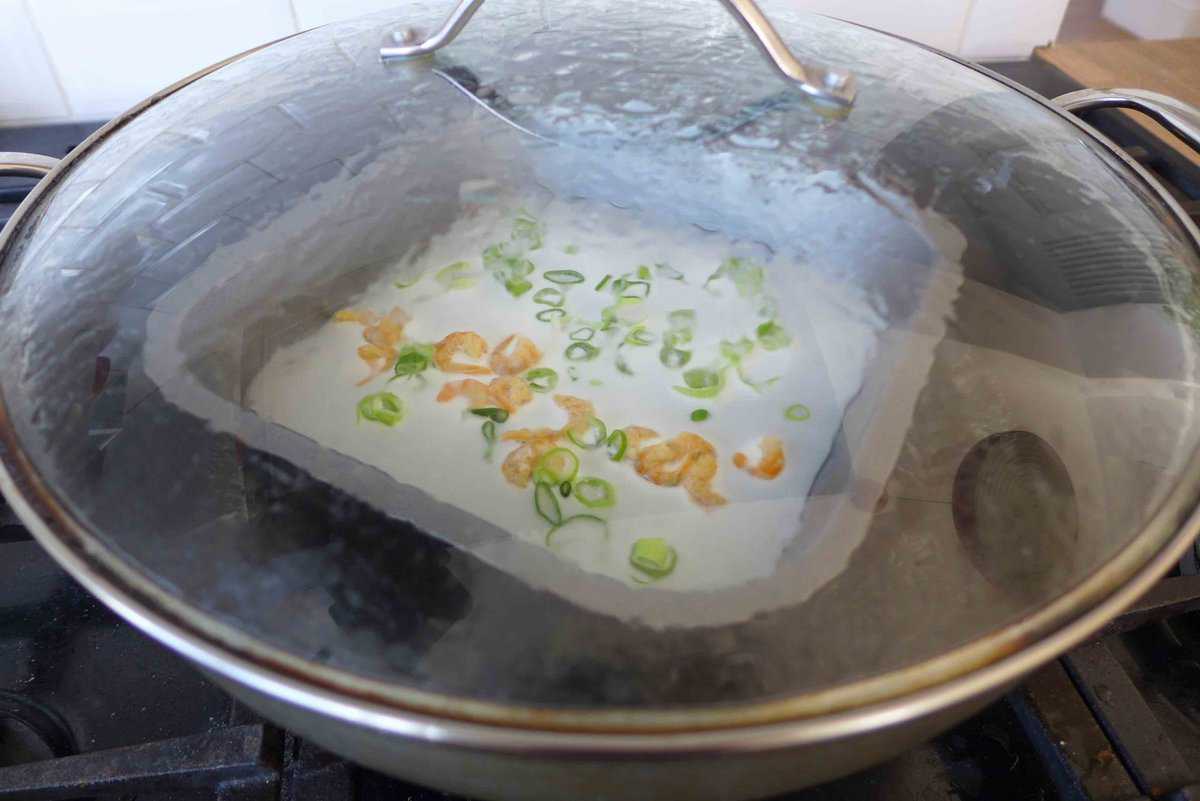
Don't put the tray in until the water starts boiling. Cover with a lid and leave to cook for 3 minutes (do not open the lid during the process).
Use two trays to rotate: Take the first tray out of the steamer then put in the second one straight away. After the first rice sheet is cooled and peeled off the tray, the second one should be cooked.
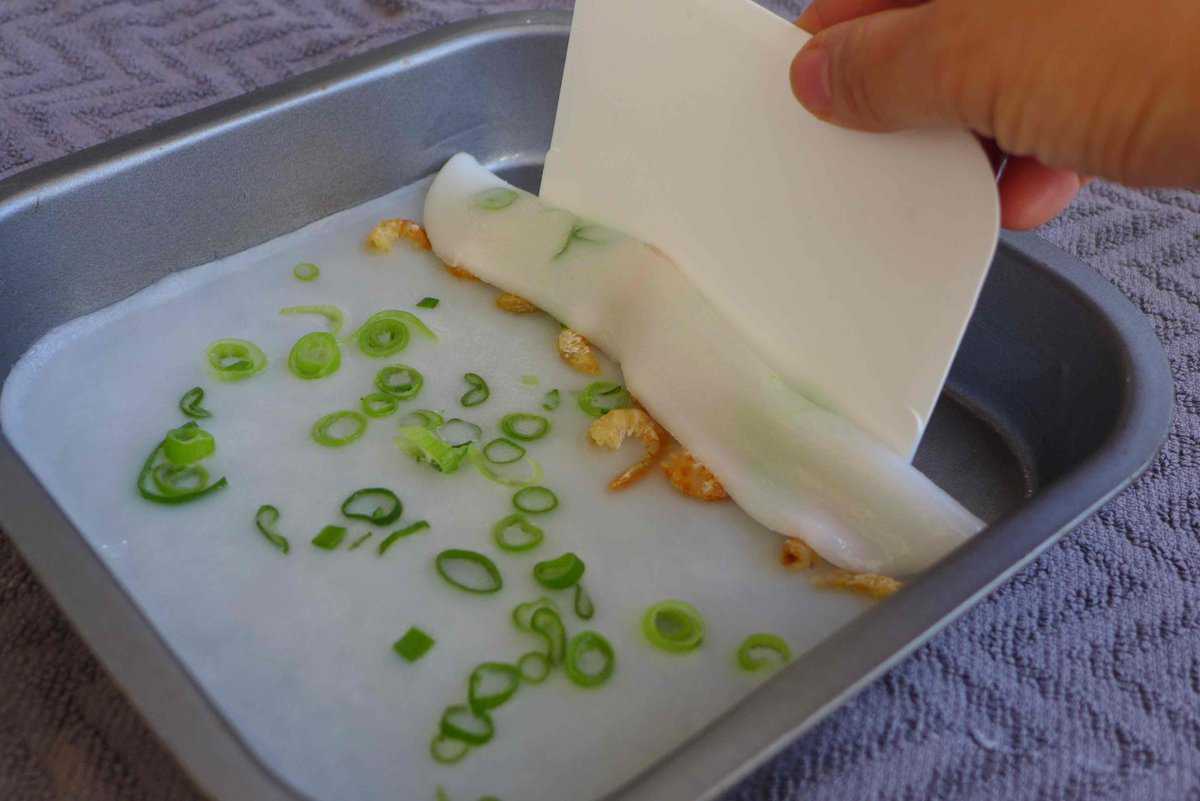
Let the rice sheet cool for a minute before you scrap and roll it. Otherwise, you might find it too sticky.
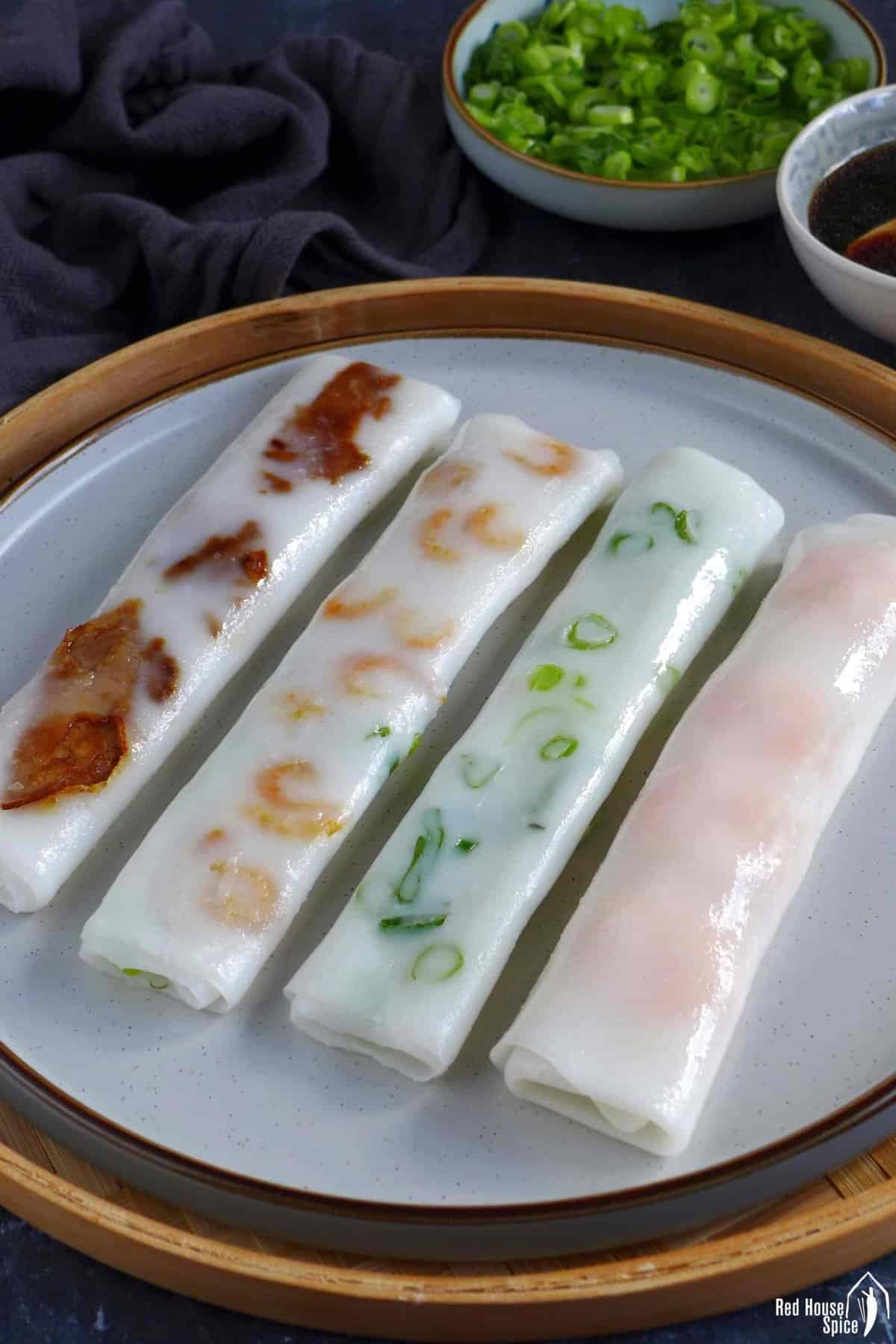
Serve with a Cheung Fun sauce
An authentic Cheung Fun dish isn't complete without a delicious sauce. So don't forget to prepare it before you start steaming the rolls.
The classic sauce
It's a soy sauce based liquid that has a deep amber colour and a rich umami taste. Using a few common Chinese condiments and aromatic vegetables, you can produce it in just a few minutes. To make about 150ml (⅔ cup) of sauce, you need:
- Onion (or shallots), ½
- Garlic, 4 cloves
- Dried shiitake mushrooms (rehydrated), 2 pieces
- Neutral cooking oil, ½ tablespoon
- Water, 120ml (½ cup)
- Light soy sauce, 4 tablespoons
- Dark soy sauce, 1 teaspoon
- Oyster sauce (or vegetarian stir-fry sauce), 1 tablespoon
- Sugar, 2 tablespoons
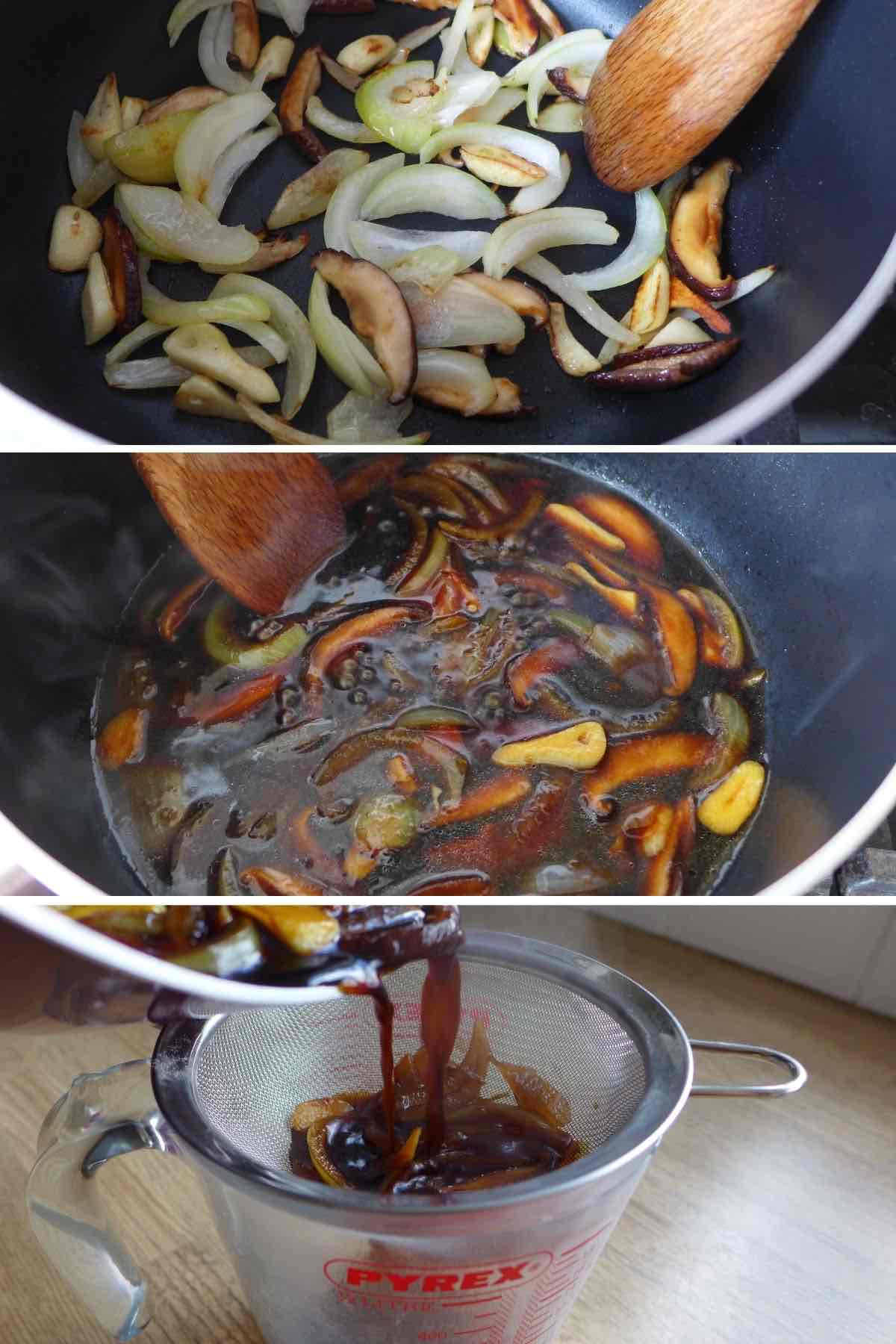
- Firstly cut onion, garlic and mushrooms into thin slices. Then fry them in oil until the onion is wilted and turns slightly brown.
- Pour in water then leave to simmer, with a lid on, for about 3 minutes to fully release their aroma.
- Add light and dark soy sauce, oyster sauce and sugar then bring back to a boil.
- Finally, strain the sauce through a sieve to remove all the solid bits (you can use them in stir-fries or soups). Pour it over the freshly steamed Cheung Fun. Garnish with toasted sesame seeds if you wish.
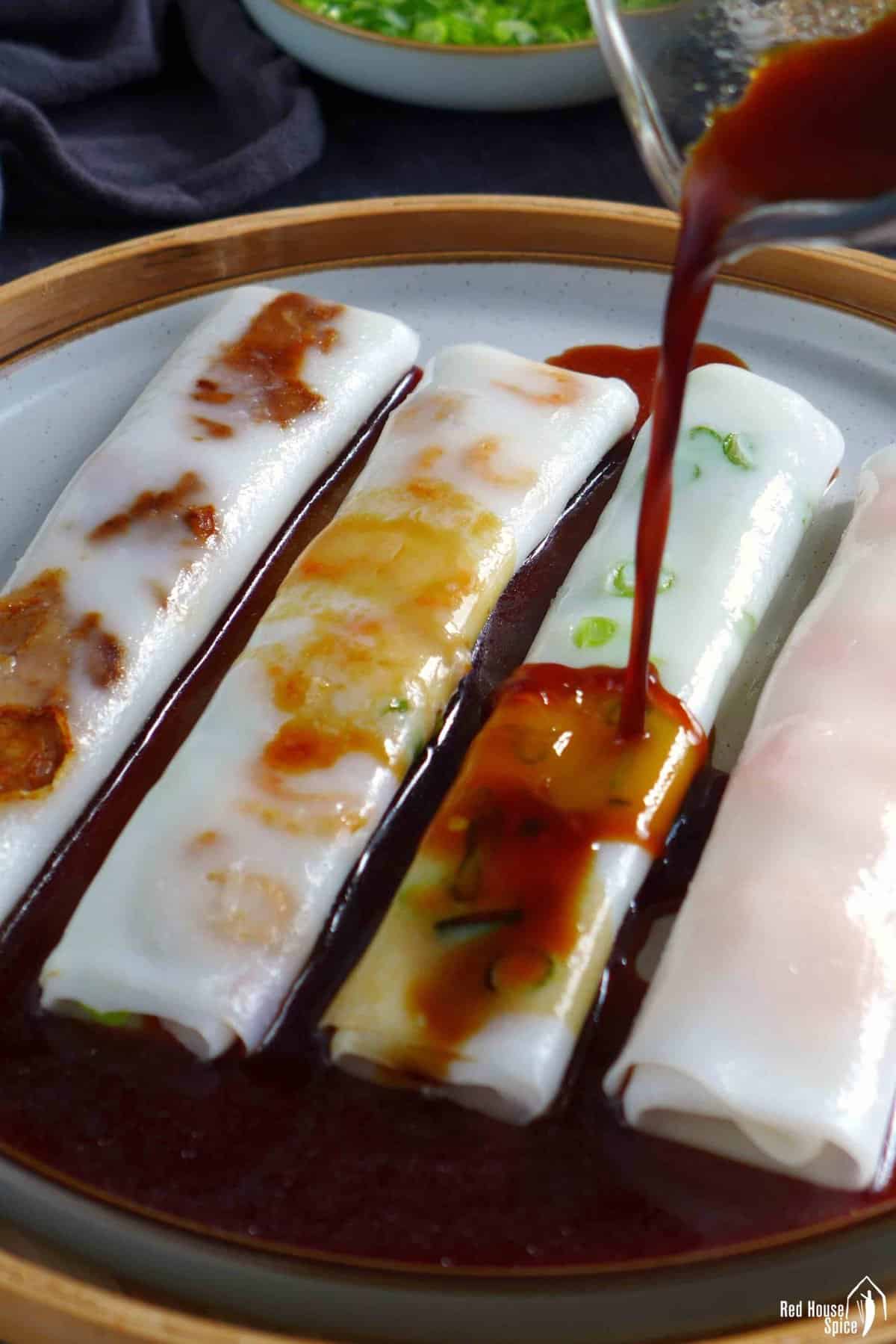
NOTE: This homemade sauce can be used for other dishes too, e.g. as a dipping sauce for dumplings, spring rolls, turnip cake, etc, or as seasoning for fried rice, fried noodles, etc.
Substitute ideas
If you don't bother making the sauce, use shop-bought Cantonese style sweet soy sauce (甜酱油) to substitute. It's a type of flavoured soy sauce with a thicker consistency than regular soy sauce.
Another alternative seasoning is a combination of sweet soy sauce and Chinese chilli oil (that's what I like my Egg Foo Young seasoned with). It's not a traditional formula but it tastes magical!
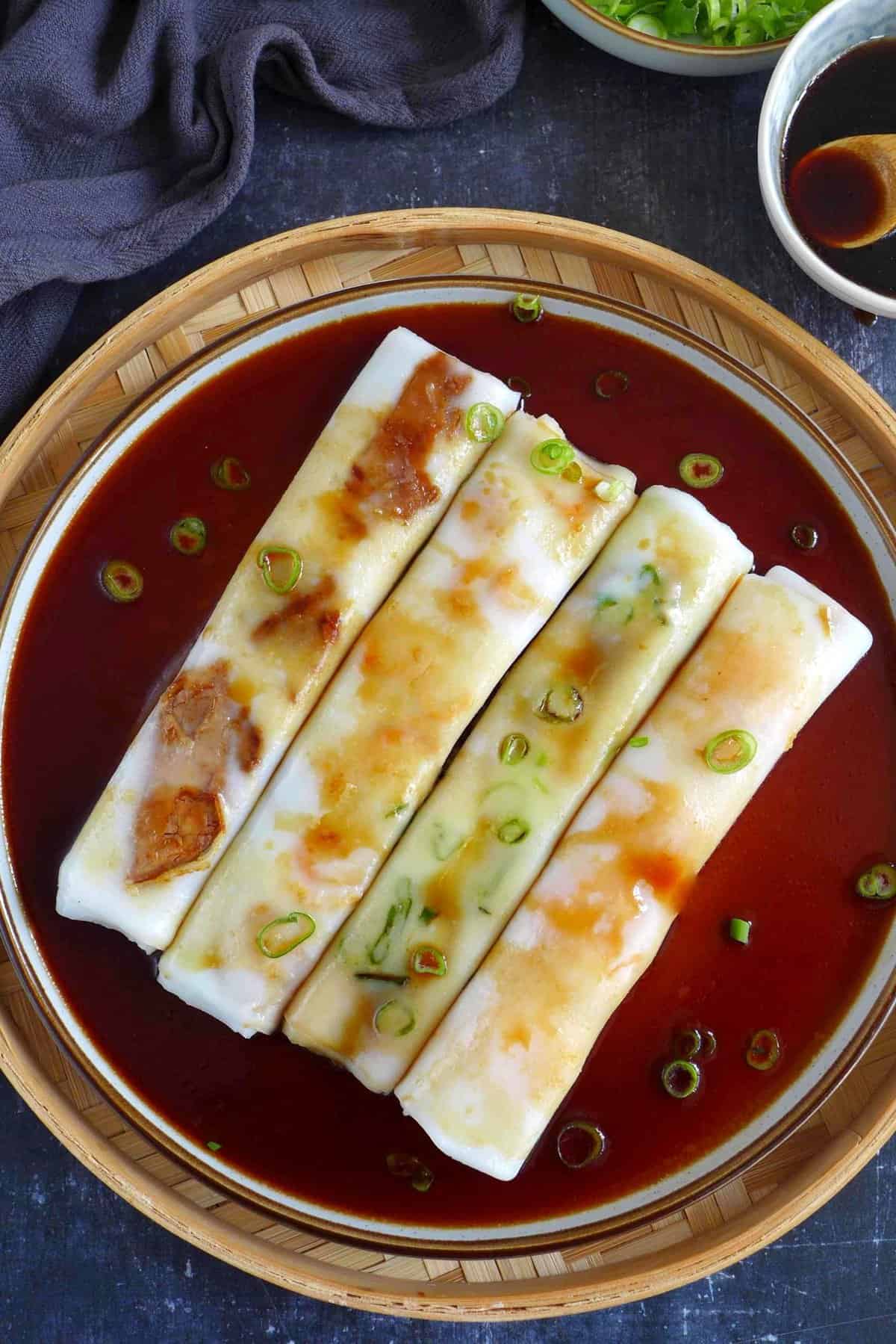
Storage and reheat
Want to make a big batch and serve later? You may keep cooked Cheung Fun in the fridge for up to 3 days. Remember to put it in airtight bags/containers to avoid drying out. Steam it for 3 minutes to reheat.
Alternatively, freeze the leftover Cheung fun for up to 1 month. Do not defrost as they'd turn brittle. Steam for 6 minutes from frozen. They'll become soft and pliable again.
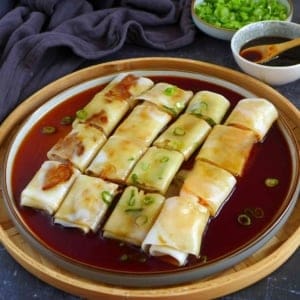
This recipe makes 6 rolls using a 18cm×18cm/7"×7" baking tray/sheet pan. If making a bigger batch, simply increase the ingredient quantity proportionally.
For the sauce
- ½ tablespoon neutral cooking oil
- ½ onion, sliced
- 4 cloves garlic, sliced
- 2 pieces dried shiitake mushrooms, rehydrated and sliced
- 120 ml water, about ½ cup
- 4 tablespoon light soy sauce
- 1 teaspoon dark soy sauce
- 1 tablespoon oyster sauce
- 2 tablespoon sugar
For the batter
- 100 g rice flour, about 3½ oz
- 50 g wheat starch, or cornstarch/tapioca starch, about 1¾ oz
- ¼ teaspoon salt
- 1 teaspoon neutral cooking oil, plus a little for brushing
- 350 g water, room temperature, 1½ cup
Filling options
- Scallions, finely chopped
- Dried shrimp, rehydrated
- Char Siu pork, sliced
- Shrimp, shelled
Make the sauce (see note 1 & 2)
-
Add oil to a small saucepan over medium heat. Fry onion, garlic and mushrooms until the onion browns on the edge.
-
Pour in water and bring to a boil. Cover with a lid and leave to simmer over low heat for 3 minutes.
-
Uncover then add light soy sauce, dark soy sauce, oyster sauce and sugar. Once it comes back to a boil, remove from the heat.
-
Pass the sauce through a sieve to remove all the solid bits. Set aside.
Mix the batter
-
Put rice flour, wheat starch (or cornstarch/tapioca starch), salt and oil into a mixing bowl. Add ⅓ of the water and stir until smooth. Pour in the rest of the water and mix well.
Steam the rolls
-
Brush a thin layer of oil over a small, light baking tray (sheet pan) that fits in the steaming apparatus you plan to use (see note 3).
-
In a wok/pot which you use for steaming, bring water to a boil. Place the tray over the steamer rack (or inside the steamer basket). Pour in batter just enough to thinly cover the surface of the tray. (I use about 60ml/¼ cup of batter for a 18cm×18cm/7"×7" tray).
-
Add the filling of your choice (see note 4 if using shrimp). Cover with a lid then leave to steam over medium heat for 3 minutes. You should see bubbles appear at that moment.
-
Uncover and carefully take out the tray. Leave to cool for about 1 minute.
-
Use a scraper (or a spatula) to gently lift the sheet from one end and roll it towards the other end. Repeat to steam the rest of the batter (Tip: to speed up the process, use 2 trays to rotate).
Serve and store
-
Transfer the steamed rolls to a serving plate. Use the scraper to cut them into bite-sized pieces. Pour the sauce over (or have it on the side for dipping).
-
You may store the leftovers (in an airtight bag/container) in the fridge for up to 3 days. Steam for 3 minutes to reheat. Alternatively, freeze for up to 1 month. Steam for 6 minutes without defrosting.
1. This recipe makes about 150ml (⅔ cup) of sauce. It may be more than you need for 6 rolls. You can store it in the fridge for up to a month. You may use it as a dipping sauce for dumplings, spring rolls, turnip cake, etc, or as seasoning for fried rice, fried noodles, etc.
2. Alternatively, use Cantonese sweet soy sauce and/or chilli oil as dipping sauce.
3. Light-weighted, non-stick, square (or rectangle) baking trays/sheet pans are preferable. This recipe also works for special Cheung Fun makers.
4. If using raw shrimp as the filling, you need to steam the batter for 1 minute then place the shrimp over and cook for another 2 minutes.
Serving: 1 plain roll | Calories: 97 kcal
Show me your dish or ask me questions @red.house.spice
Reader Interactions
Source: https://redhousespice.com/cheung-fun/